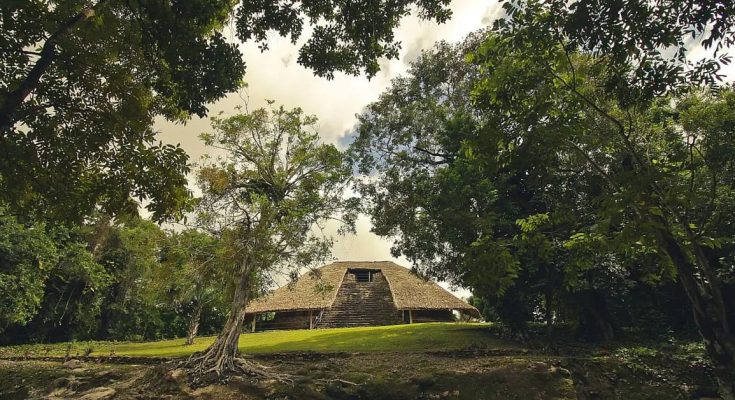Currently, these archaeological zones in southern Quintana Roo are little known. However, twelve centuries ago, when they were at their peak and in their maximum splendor, they had a population of over a million inhabitants, three times the current population density of the area. These impressive ruins in Quintana Roo hold secrets and wonders waiting to be discovered.
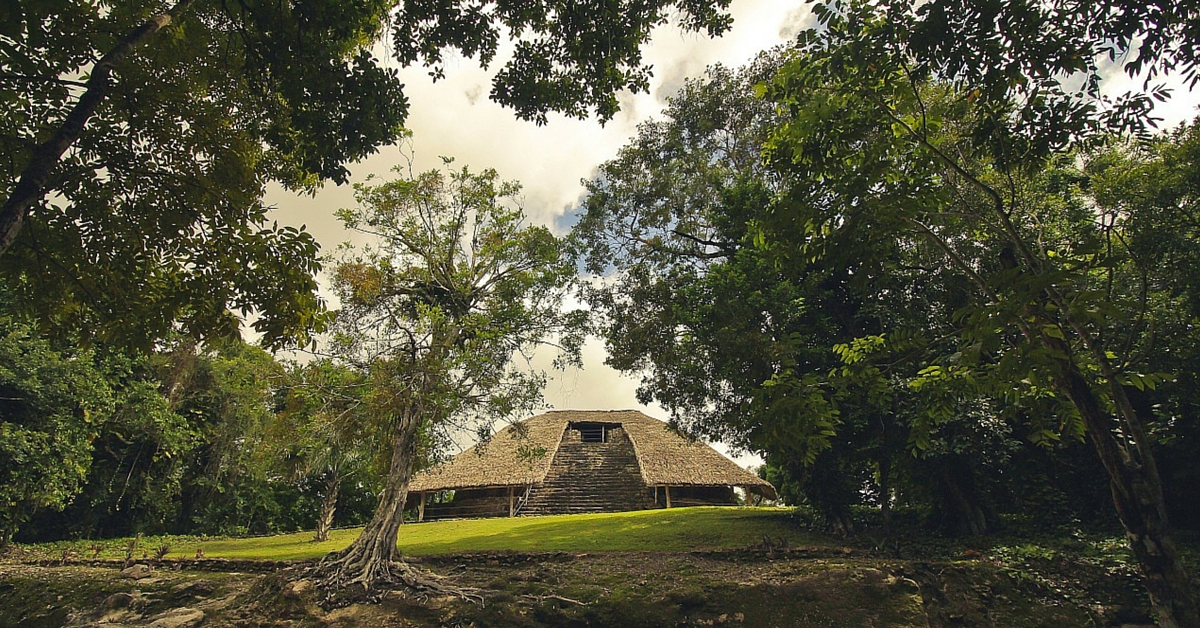
You might think that you and the Mayan world are one because you have visited Chichén Itzá, Cobá, or Tulum, but there are also these 5 archaeological zones in Quintana Roo. If you already know them, it is very likely that you are on your way to becoming a great scholar of ancient Mayan culture. Let’s discover them!
Archaeological Zones in Quintana Roo
Quintana Roo is home to a rich array of archaeological sites that showcase the grandeur of the ancient Maya civilization. Here’s a brief overview and a quick table of the notable archaeological zones in the region.
Overview
These archaeological sites, although less known compared to their more famous counterparts like Chichén Itzá, Cobá, or Tulum, offer a deep dive into the history and culture of the Maya. The sites include impressive structures, unique artifacts, and breathtaking natural surroundings, making them essential visits for anyone interested in ancient civilizations.
Quick Table of Archaeological Sites
| Site | Description | Location | Entrance Fee |
|---|---|---|---|
| Dzibanché | A large city with multiple architectural groups, known for its wooden lintels and Teotihuacán-style constructions. | Near Chetumal | $55 MXN |
| Kinichná | Small settlement connected to Dzibanché, known as “The House of the Sun.” | Near Dzibanché | Included in Dzibanché fee |
| Kohunlich | Known for its Temple of the Masks with large sun god sculptures. | 65 km from Chetumal | $65 MXN |
| Oxtankah | Features both Mayan structures and a ruined Catholic temple, known as the cradle of mestizaje. | 15 km from Chetumal | $50 MXN |
| Chacchobén | Largest settlement in the Region of the Lakes, with well-preserved structures surrounded by jungle. | 70 km from Chetumal | $55 MXN |
| El Meco | Important for its proximity to the sea, serving as a Maya navigation site. | Near Cancún | $50 MXN |
| San Gervasio | Small but significant site in Cozumel, with sacred paths. | Cozumel | $75 MXN |
| El Rey | Located in Cancún’s hotel zone, known for its structures along the Caribbean Sea. | Cancún Hotel Zone | $55 MXN |
These sites offer a unique glimpse into the Mayan world, far from the bustling tourist spots. Now, let’s delve deeper into each of these fascinating locations.
By visiting these sites, you will not only experience the architectural marvels but also gain insights into the everyday lives, religious practices, and social structures of the ancient Maya.
Optimizing with the phrase “zonas arqueológicas de Quintana Roo mapa,” you can easily find detailed maps and guides online to help plan your visits to these incredible archaeological zones.
Are you ready to explore these hidden gems and uncover the secrets of the ancient Maya? Let’s dive into the detailed descriptions of each site!
Dzibanché, Place of the Mayan Offerings
Its name means “Writing on Stone” due to the carved wooden lintels found in the area. It was a prosperous city founded around 200 B.C. Located 78 km from Chetumal, similarities with Teotihuacán in the State of Mexico have been discovered here.
During its early constructive phase (Early Classic period), it focused on building enormous temples. In the Mesoamerican Classic period, the city expanded to include palaces, public buildings, and houses. By the Terminal Classic period, the city began to be abandoned. The Maya only returned to make offerings and worship their ancestors in ceremonies. The entrance fee is $55 MXN.
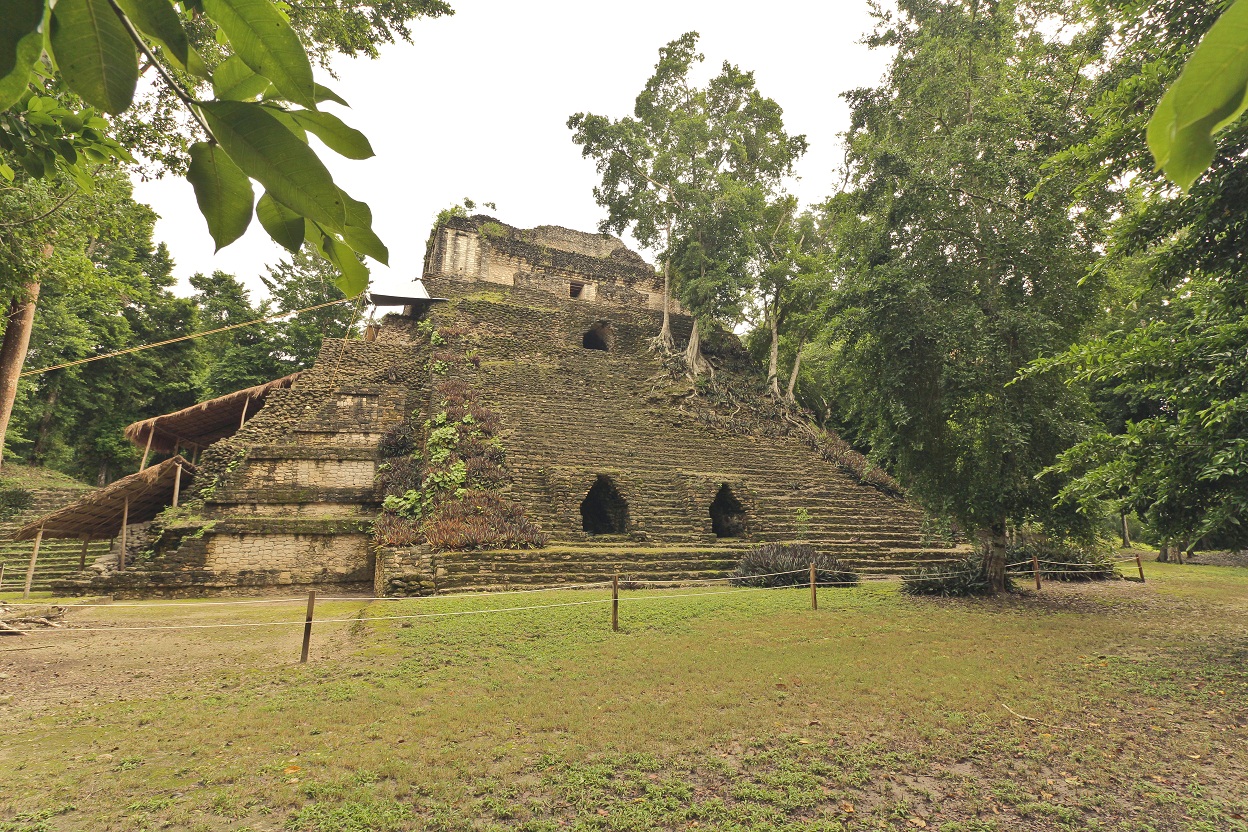
Kinichná, the House of the Sun
This small settlement near Dzibanché, whose entrance fee includes access to Kinichná, is known as “The House of the Sun.” Legend has it that when Dzibanché was at its peak, political conflicts among the high ranks led to the separation of Kinichná. The Dzibanché complex includes the architectural groups: Dzibanché or Main Group, Lamay Group, Tutil, and Kinichná, all connected by sacbés (white roads). Kinichná in Maya means “The House of the Sun.”
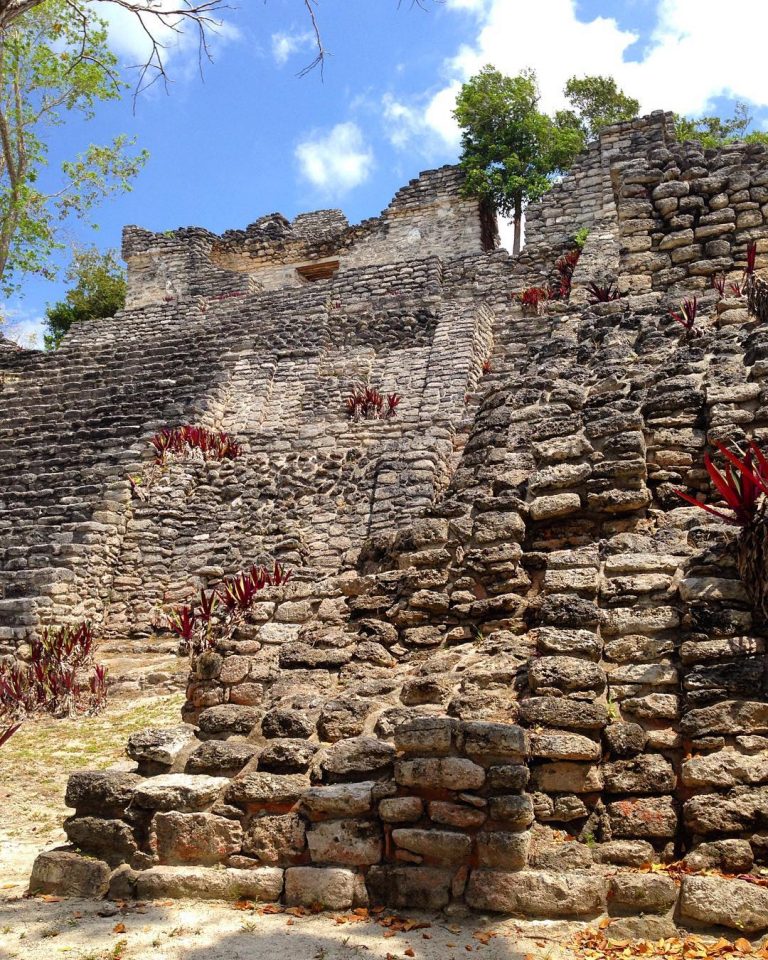
Kohunlich, the Temple of the Masks
Known for its famous masks dedicated to Kinich Ahau, Lord of the Solar Face, Kohunlich is an archaeological zone named after the English “Cohoon Ridge,” meaning “Hill of Cohune Palms.” These masks are approximately 2 meters tall and are uniquely beautiful. Originally, the Temple of the Masks had eight figures, of which five remain today. Kohunlich, founded around 200 B.C., was abandoned by 1200 A.D. It is located 65 km from Chetumal, and the entrance fee is $65 MXN.
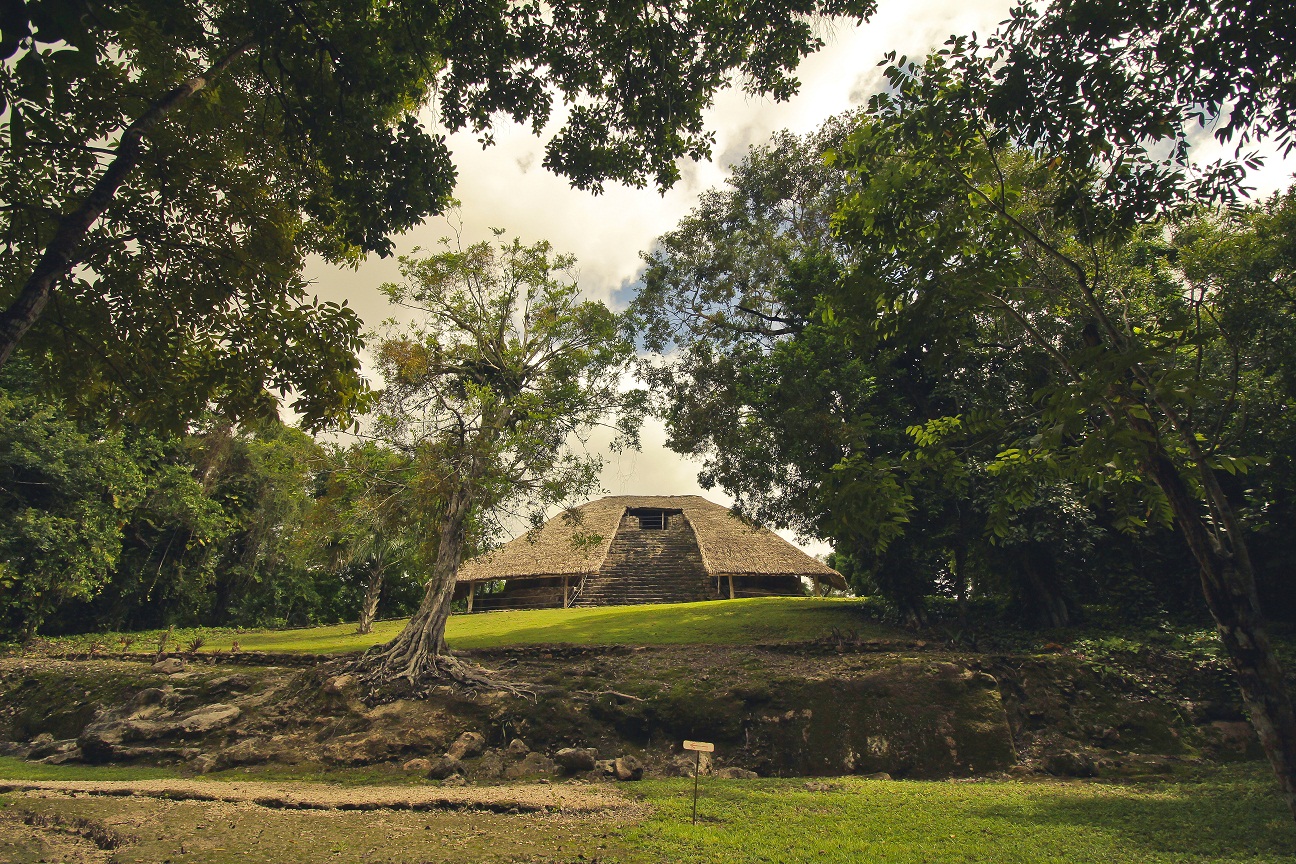
Oxtankah, the Cradle of Mestizaje
Oxtankah is a fascinating archaeological zone that includes both Mayan structures and a ruined Catholic temple. This place is known as the cradle of mestizaje, where the first mestiza, Ixmo, daughter of Gonzálo Guerrero and Zazil Há, was born. Oxtankah had a water supply system with chultunes and wells. It is located 15 km from Chetumal, and the entrance fee is $50 MXN.
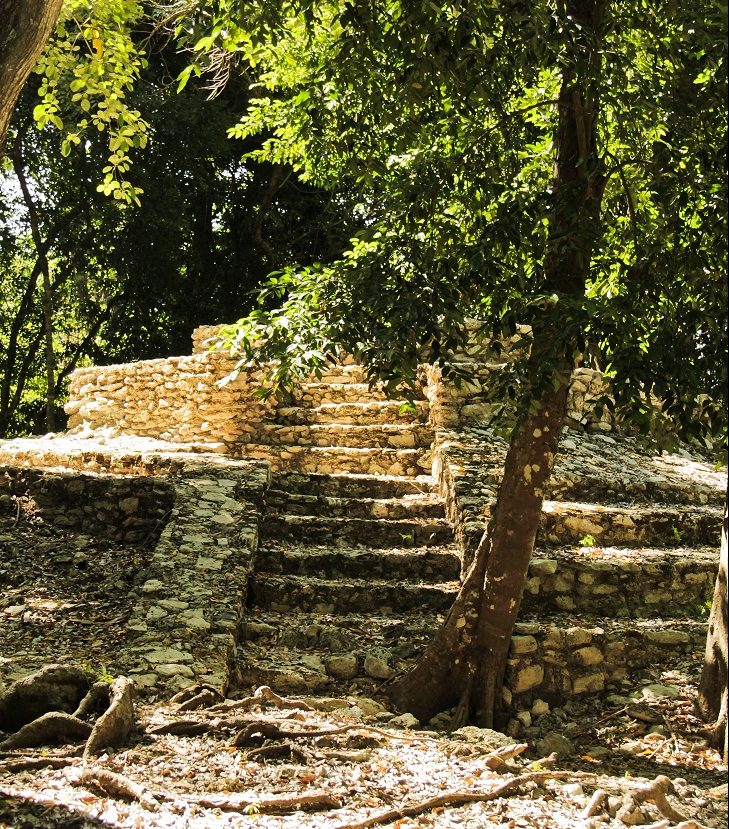
Chacchobén, Place of the Red Corn
The largest settlement in the Region of the Lakes, Chacchobén, is located 70 km from Chetumal. Its rounded corners indicate that it belonged to the Petén region. The jungle delicately covers this imposing city, and among the findings are two stelae with hieroglyphs, although they are not legible. Its name in Maya means “Place of the Red Corn.” The entrance fee is $55 MXN.
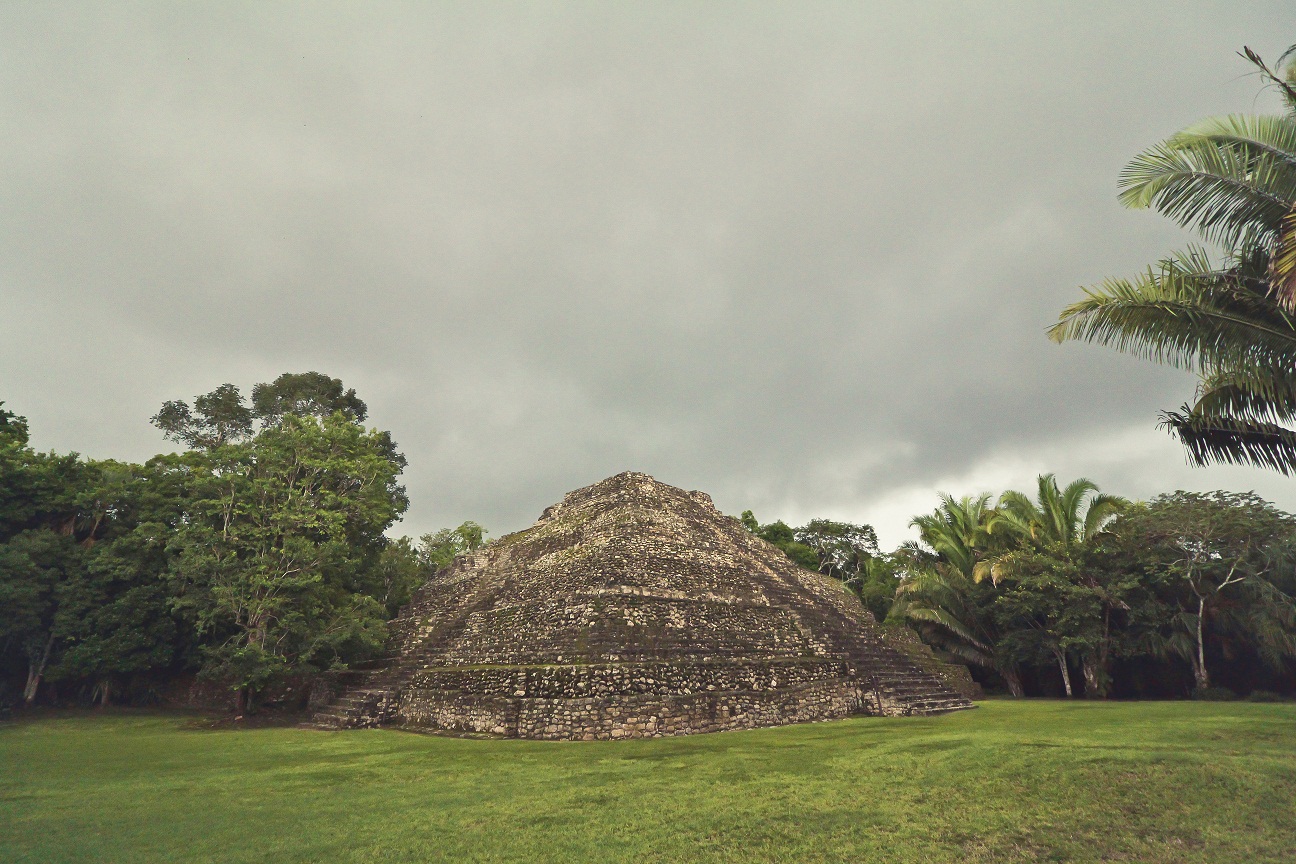
El Meco
El Meco, near Cancún, is known for its proximity to the sea, serving as a significant Maya navigation site. Its strategic location makes it a fascinating place to explore. The entrance fee is $50 MXN.
San Gervasio
San Gervasio, in Cozumel, is a small but significant site with sacred paths (sacbés). This place was a pilgrimage center for Mayan women who worshipped the goddess Ixchel. The entrance fee is $75 MXN.
El Rey
Located in Cancún’s hotel zone, El Rey is known for its structures along the Caribbean Sea. It is an excellent option for those who want to learn about the Mayan legacy without straying far from the city. The entrance fee is $55 MXN.
Tips for Visiting the Archaeological Zones
Visiting the archaeological zones of Quintana Roo can be an unforgettable experience. To make the most of your visit, here are some useful tips:
- Free Admission on Sundays: Remember that entry to the archaeological zones is free for Mexicans and residents on Sundays with a valid ID. This is a great opportunity to explore without additional cost.
- Sun Protection: Always carry sunscreen with you. The archaeological sites are often open-air, and prolonged sun exposure can be harmful. Be sure to reapply the sunscreen several times during your visit.
- Biodegradable Mosquito Repellent: It is essential to bring mosquito repellent, preferably biodegradable to avoid harming the environment. If you forget your repellent, mosquitoes can be a problem, especially in areas close to the jungle. A natural tip: look for pepper leaves and rub them on your skin as a natural repellent.
- Opening Hours: The archaeological zones are open daily from 8:00 AM to 5:00 PM. Plan your visit to arrive early and avoid the hottest hours of the day and potential crowds.
- Hydration and Food: Bring enough water to stay hydrated, especially if you plan to spend several hours exploring. It is also advisable to bring some light snacks.
- Appropriate Clothing and Footwear: Wear comfortable, breathable clothing and appropriate footwear for walking long distances and uneven terrain. A hat or cap and sunglasses are also recommended.
- Respect for Heritage: Remember that you are visiting historical and cultural sites of great importance. Respect the structures and follow the guides’ instructions and signage. Do not climb the ruins or take objects from the site.
By following these tips, your visit to the archaeological zones of Quintana Roo will be safer, more comfortable, and enriching. Enjoy your adventure in Mayan history!
Conclusion
Now that you have the essential tips for visiting the archaeological zones of Quintana Roo, it’s time to start planning your trip. Each of these sites offers a unique glimpse into the ancient Mayan civilization, providing a fascinating experience for history enthusiasts and casual visitors alike.
To make your visit even more enjoyable, consider booking a comfortable stay at one of the many nearby hotels. Explore the rich history by day and relax in luxury by night.
Booking.comPlanning to visit these hidden gems? Find the best hotel deals nearby to make the most of your archaeological adventure.

